Fashion design is an exciting and dynamic field that requires creativity, innovation, and the right tools to bring ideas to life. Fortunately, there are a variety of free fashion design software options available that can help designers of all skill levels create professional-grade designs.
These software have rendered paper designs obsolete and now designers have access to a vast template gallery, design inspiration, and a sea of tools to speed up the design process.
The Evolution of Fashion Design
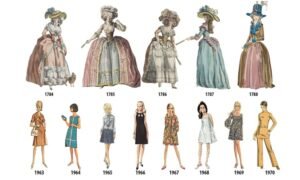
Fashion design as an ever-evolving field has undergone significant changes over the years. From the early days of couture to the rise of fast fashion, the industry has seen a wide range of trends, innovations, and challenges.
Early Days of Couture
The origins of fashion design can be traced back to the early days of couture when clothing was handmade by skilled artisans for the wealthy and elite. In the 19th century, Paris became the center of the fashion world, with designers such as Charles Frederick Worth and Paul Poiret creating elaborate, one-of-a-kind designs for their clients.
The Rise of Ready-to-Wear

In the early 20th century, the rise of ready-to-wear clothing began to change the face of fashion. Mass-produced clothing made fashion more accessible to the middle class, and designers such as Coco Chanel and Elsa Schiaparelli began to incorporate elements of ready-to-wear into their couture designs.
Mid-Century Modernism
The mid-20th century was marked by a period of modernism, as designers such as Christian Dior and Hubert de Givenchy introduced new silhouettes and styles that reflected the changing times. The introduction of the “New Look” by Dior in 1947, with its full skirts and nipped-in waists, was a major turning point in fashion history.
The Swinging Sixties
The 1960s were a time of radical change in fashion, as designers such as Mary Quant and André Courrèges introduced new styles that reflected the youth culture of the era. Mini-skirts, bright colors, and bold patterns were all the rage, and fashion became a way for young people to express their individuality.
The Rise of Fast Fashion

In the late 20th and early 21st centuries, the rise of fast fashion began to transform the fashion industry. With the advent of mass production and global supply chains, clothing became cheaper and more disposable, leading to concerns about sustainability and the ethics of the industry.
Technology and Innovation

Today, technology and innovation continue to shape the world of fashion design. From 3D printing and virtual reality to sustainable materials and ethical manufacturing practices, designers are exploring new ways to create and produce clothing that is both stylish and responsible.
As we move forward, it will be interesting to see how fashion design continues to evolve and adapt to the changing world around us.
The Benefits of Using Free Fashion Software
Fashion design is a highly competitive industry, and staying ahead of the game requires not only creativity and talent but also the right tools. While professional-grade fashion software can be expensive, there are also many free options available that offer a wide range of features and functionalities. Let’s take a close look at the benefits of using free fashion software.
Cost Savings
Professional-grade software can cost hundreds or even thousands of dollars, which can be a barrier for aspiring designers who are just starting out. Free software options allow designers to experiment with different tools and techniques without having to make a significant financial investment.
Ease of Use
Many free fashion software options are designed with ease of use in mind, making them accessible to designers of all skill levels. These tools often come with intuitive interfaces and user-friendly features that make it easy to create designs and patterns, even for those who are new to the field.
Range of Features
Despite being free, many fashion software options offer a wide range of features and functionalities that are comparable to professional-grade software. From 2D and 3D modeling to pattern making and image editing, these tools can help designers bring their ideas to life and create professional-grade designs.
Flexibility
Free fashion software options are often highly customizable, allowing designers to adapt them to their specific needs and preferences. This flexibility can be especially valuable for designers who work on unique or unconventional projects, as it allows them to tailor their tools to their specific requirements.
Collaboration
Many free fashion software options also offer collaboration features that make it easy to work with others on a project. This can be especially valuable for designers who work remotely or who collaborate with colleagues or clients who are located in different parts of the world.
Innovation
Free fashion software options are often on the cutting edge of innovation, with many developers pushing the boundaries of what is possible in terms of 2D and 3D modeling, pattern making, and other areas of fashion design. By using free software, designers can stay up-to-date on the latest trends and techniques in the industry and continue to push the boundaries of what is possible in fashion design.
Other benefits are automation of processes minimizing repetitive tasks, easy testing and comparing different looks and fabrics, easy merchandising, and millions of options to choose from in colors, patterns, and templates.
Whether you’re a beginner or an experienced designer, these tools can help you bring your ideas to life and take your fashion design skills to the next level.
Key Features of Free Fashion Design Software
2D and 3D Modeling
One of the key features of free fashion design software is the ability to create both 2D and 3D models of your designs. This allows you to visualize your designs in a more realistic way and make changes to your designs more easily. You can also experiment with different colors, fabrics, and patterns to see how they will look in the finished product.
Pattern Making
Another important feature of free fashion design software is the ability to create patterns. With pattern-making tools, you can create patterns for garments and accessories, and adjust them as needed to ensure a perfect fit. This can save you time and money by reducing the need for physical samples and prototypes.
Image Editing
Free fashion design software often includes image editing tools that allow you to modify and manipulate images of your designs. This can include adjusting colors, adding textures and patterns, and removing backgrounds. Image editing tools can help you create professional-looking images and presentations for your designs.
Collaboration
Many free fashion design software options include collaboration features that allow you to work with others on a project. This can include real-time collaboration on design ideas and feedback, as well as the ability to share files and designs with others.
Customization
Free fashion design software is often highly customizable, allowing you to tailor the software to your specific needs and preferences. This can include the ability to customize toolbars and menus, as well as the ability to create custom shortcuts and hotkeys.
Design Libraries
Many free fashion design software options include design libraries that provide access to a wide range of pre-made templates, designs, and patterns. This can help to speed up the design process and provide inspiration for your own designs.
Exporting and Sharing
Finally, free fashion design software often includes the ability to export and share your designs in a variety of formats. This can include PDFs, image files, and 3D files that can be shared with others or used in other software programs.
Here are the top 16 free fashion design software options for 2023.
Blender

Blender is a powerful open-source 3D modeling software that can be used for a variety of design applications, including fashion design. It features a user-friendly interface and a wide range of tools that can help designers create 3D models of their designs.
Inkscape

Inkscape is a free and open-source vector graphics editor that can be used for fashion design. It features a variety of tools for creating and editing vector graphics, including drawing tools, shape tools, and text tools.
GIMP

GIMP (GNU Image Manipulation Program) is a free and open-source image editing software that can be used for fashion design. It features a wide range of tools for editing and manipulating images, including painting tools, selection tools, and color correction tools.
SketchUp

SketchUp is a 3D modeling software that can be used for fashion design. It features a simple and intuitive interface that allows users to create 3D models of their designs quickly and easily.
Marvelous Designer
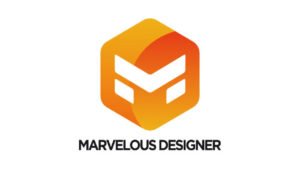
Marvelous Designer is a 3D design software specifically designed for fashion designers. It features a wide range of tools for creating realistic 3D clothing designs, including pattern-making tools, draping tools, and sewing tools.
Krita

Krita is a free and open-source digital painting software that can be used for fashion design. It features a wide range of painting tools, including brushes, pencils, and smudge tools, as well as support for layers and masks.
My Label
My Label is a free online fashion design software that allows users to create custom clothing designs. It features a simple and user-friendly interface and a wide range of tools for creating patterns, adjusting measurements, and adding details to designs.
CLO
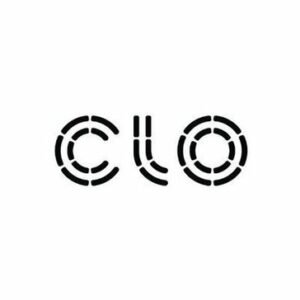
CLO is a 3D fashion design software that allows users to create realistic 3D clothing designs. It features a variety of tools for pattern making, draping, and 3D rendering, as well as a library of fabric textures and patterns.
Optitex
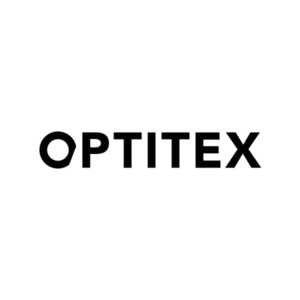
Optitex is a 3D fashion design software that allows users to create and visualize clothing designs in 3D. It features a variety of tools for pattern making, grading, and simulation, as well as support for custom fabrics and textures.
FreeCAD
FreeCAD is a free and open-source 3D modeling software that can be used for fashion design. It features a wide range of tools for creating 3D models, including drawing tools, shape tools, and extrusion tools.
Daz Studio

Daz Studio is a free 3D design software that can be used for fashion design. It features a wide range of tools for creating 3D models, including a library of pre-made 3D assets, as well as tools for lighting and rendering.
Design Doll

Design Doll is a free 3D design software that allows users to create realistic 3D models of human figures for fashion design. It features a wide range of tools for posing, adjusting proportions and adding clothing and accessories to models.
Seamly2D

Seamly2D is a free and open-source pattern-making software that can be
used for fashion design. It features a variety of tools for creating and editing patterns, as well as support for custom measurements and grading.
QCAD

QCAD is a free and open-source 2D CAD software that can be used for fashion design. It features a variety of tools for creating and editing technical drawings, including dimensioning tools, line tools, and curve tools.
LibreCAD
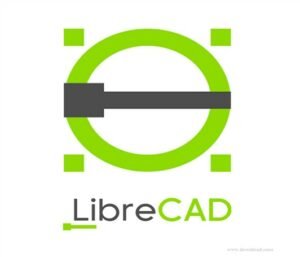
LibreCAD is a free and open-source 2D CAD software that can be used for fashion design. It features a variety of tools for creating and editing technical drawings, as well as support for custom layers and layouts.
FreeFashion

FreeFashion is a free and open-source fashion design software that allows users to create 2D and 3D clothing designs. It features a variety of tools for pattern making, grading, and simulation, as well as support for custom fabrics and textures.
With any of these top 16 free fashion design software, your design game can never remain the same. These tools offer a wide range of features and functionalities that can you create professional-grade designs. Doesn’t matter whether you’re a beginner or an experienced designer, these free software options can help you bring your ideas to life and take your fashion design skills to the next level.




